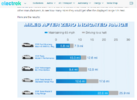MYLR going a little over 800mi. I'm using ABetterRoutePlanner, but I'm wondering if my settings are too conservative.
What I put in:
Starting charge at 95% (may be 100%)
Reference consumption at 65mph = 330Wh/mi (default was 298, but I dont know what reality is)
Charger Arrival SoC = 15% (is that too conservative?)
Charger Max SoC = 95%
Reference Speed = 120% (I go about 10-15 over)
Temperature = 55deg (likely will be higher)
Weather = Rain (dont know if it will actually rain, so I put it in there in case)
The furthest I've ever driven this car in one trip is like 80mi. I usually charge to 70% and recharge at home when it drops to 50%. Never used a supercharger before other than to make sure it worked (1min). I know it wont HURT using those settings above, but I dont want to overly restrict myself either. If I charge to 100% I know to do set departure, unsure if I want/need to charge to full.
My current 30mi avg Wh/mi is 220, but I also havent been driving on highways a lot. Mostly 40-50mph.
I guess what I'm asking is can I trust ABRP, or do I need to build margin in myself?
What I put in:
Starting charge at 95% (may be 100%)
Reference consumption at 65mph = 330Wh/mi (default was 298, but I dont know what reality is)
Charger Arrival SoC = 15% (is that too conservative?)
Charger Max SoC = 95%
Reference Speed = 120% (I go about 10-15 over)
Temperature = 55deg (likely will be higher)
Weather = Rain (dont know if it will actually rain, so I put it in there in case)
The furthest I've ever driven this car in one trip is like 80mi. I usually charge to 70% and recharge at home when it drops to 50%. Never used a supercharger before other than to make sure it worked (1min). I know it wont HURT using those settings above, but I dont want to overly restrict myself either. If I charge to 100% I know to do set departure, unsure if I want/need to charge to full.
My current 30mi avg Wh/mi is 220, but I also havent been driving on highways a lot. Mostly 40-50mph.
I guess what I'm asking is can I trust ABRP, or do I need to build margin in myself?





